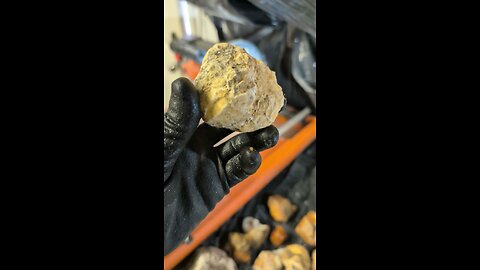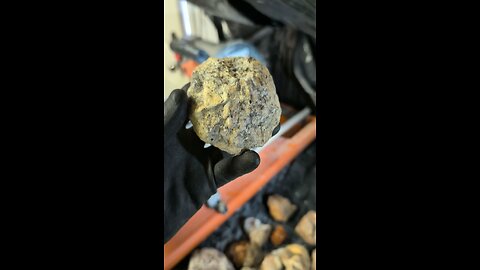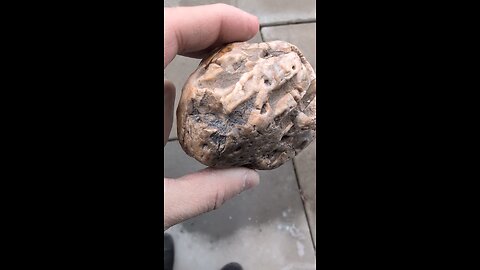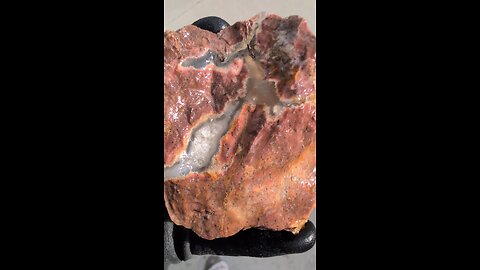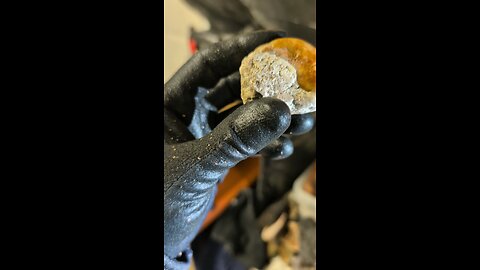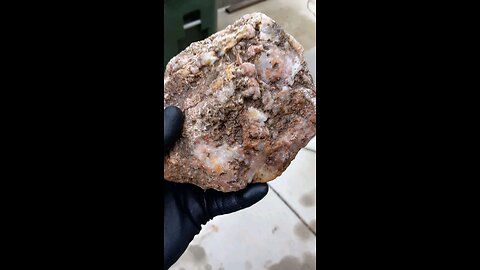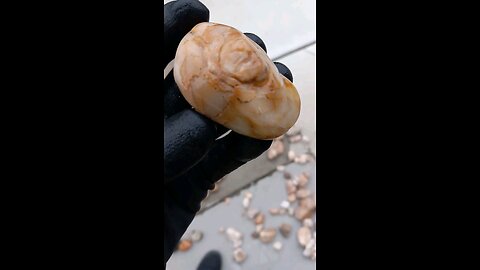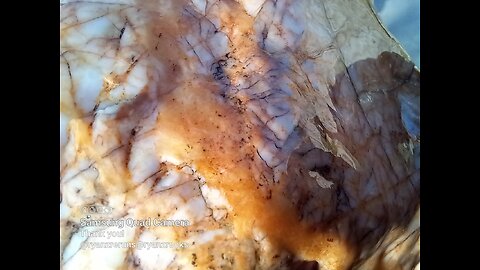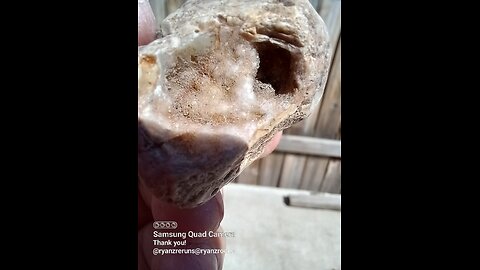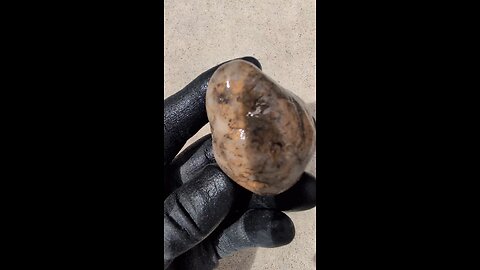
Quartz!
73 videos
Updated 5 months ago
Quartz is a silicate mineral, specifically a tectosilicate or framework silicate. It is one of the most common minerals on Earth's crust, with the chemical composition SiO₂ (silicon dioxide). Here are some key characteristics of quartz:
Crystal Structure: Quartz forms in hexagonal prisms, often with a pyramidal termination. It has a high degree of crystalline perfection.
Hardness: Quartz has a Mohs hardness of 7, making it relatively hard and durable.
Color: It can appear in many colors due to impurities or structural defects:
Clear or colorless quartz is called rock crystal.
Milky quartz has a white, cloudy appearance due to minute fluid inclusions.
Amethyst is purple due to irradiation and iron impurities.
Citrine ranges from yellow to orange or brown, colored by iron.
Smoky quartz is brown to black from natural radiation exposure.
Rose quartz is pink, with the color attributed to trace amounts of titanium, iron, or manganese.
Luster: Quartz typically has a vitreous (glass-like) luster.
Transparency: It can vary from transparent to translucent to opaque.
Cleavage: Quartz does not have cleavage; it fractures conchoidally (shell-like breaks), which is another characteristic of its durability.
Quartz is not only valued for its aesthetic qualities but also for its industrial uses, like in the manufacturing of glass, electronics (as silicon for semiconductors), and abrasives. It's also a significant component in many types of rock, including granite, where it often forms the light-colored, reflective crystals.
-
Quartz+!
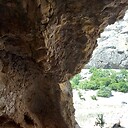 HumbleConservativeQuartzite is a metamorphic rock that forms from the metamorphism of quartz sandstone or quartz-rich sedimentary rock. Here are some key points about quartzite: Formation: Quartzite forms when quartz sandstone is subjected to high temperatures and pressures, typically during regional metamorphism. This process recrystallizes the quartz grains, fusing them together, and sometimes introduces new minerals. Composition: It is predominantly composed of quartz, with minor amounts of other minerals like mica, feldspar, or iron oxides, which can affect its color. Texture: Quartzite has a granular texture but becomes more compact and crystalline with metamorphism. Unlike sandstone, which can be porous, quartzite is typically very dense and hard. Color: Pure quartzite is usually white or light gray, but impurities can give it colors ranging from pink, red, yellow, to green or blue. Iron oxides can tint it red or yellow, while other minerals might contribute different hues. Properties: Hardness: Quartzite is very hard, with a Mohs hardness of about 7, similar to quartz. Durability: It's highly resistant to weathering and erosion, making it durable for various uses. Uses: Construction: Due to its hardness and aesthetic appeal, quartzite is used in building facades, flooring, countertops, and as a decorative stone. Landscaping: It's popular in landscaping for paths, walls, and decorative elements because of its durability. Art: Its fine grain and ability to take a high polish make it suitable for sculptures and carvings. Geological Significance: Quartzite provides evidence of past geological processes, particularly the conditions of metamorphism. It can help geologists understand the history of mountain building and the transformation of sedimentary rocks into metamorphic ones.28 views 1 comment
HumbleConservativeQuartzite is a metamorphic rock that forms from the metamorphism of quartz sandstone or quartz-rich sedimentary rock. Here are some key points about quartzite: Formation: Quartzite forms when quartz sandstone is subjected to high temperatures and pressures, typically during regional metamorphism. This process recrystallizes the quartz grains, fusing them together, and sometimes introduces new minerals. Composition: It is predominantly composed of quartz, with minor amounts of other minerals like mica, feldspar, or iron oxides, which can affect its color. Texture: Quartzite has a granular texture but becomes more compact and crystalline with metamorphism. Unlike sandstone, which can be porous, quartzite is typically very dense and hard. Color: Pure quartzite is usually white or light gray, but impurities can give it colors ranging from pink, red, yellow, to green or blue. Iron oxides can tint it red or yellow, while other minerals might contribute different hues. Properties: Hardness: Quartzite is very hard, with a Mohs hardness of about 7, similar to quartz. Durability: It's highly resistant to weathering and erosion, making it durable for various uses. Uses: Construction: Due to its hardness and aesthetic appeal, quartzite is used in building facades, flooring, countertops, and as a decorative stone. Landscaping: It's popular in landscaping for paths, walls, and decorative elements because of its durability. Art: Its fine grain and ability to take a high polish make it suitable for sculptures and carvings. Geological Significance: Quartzite provides evidence of past geological processes, particularly the conditions of metamorphism. It can help geologists understand the history of mountain building and the transformation of sedimentary rocks into metamorphic ones.28 views 1 comment -
Snowball geode!
 HumbleConservativeA geode is a hollow, usually spherical rock, that when broken open reveals a cavity lined with crystals or other mineral formations. Here are some key points about geodes: Formation: Geodes form when gas bubbles or cavities in volcanic or sedimentary rock are filled with mineral-rich water. As the water evaporates, it leaves behind minerals which crystallize over time, lining the inside of the cavity. Structure: The outer layer of a geode is typically rough and nondescript, often making it look like an ordinary rock until it's cracked open. Inside, you might find crystals like quartz, amethyst, calcite, or even rarer minerals. Location: They are commonly found in regions with volcanic activity or limestone deposits. Famous locations include parts of the United States, Brazil, Uruguay, and Mexico. Uses: Geodes are popular among rock collectors and are often cut and polished for use in jewelry or as decorative pieces. Some are also used in metaphysical practices for their supposed healing properties. Identification: To identify a geode, one would typically look for a rock that is unusually light for its size or has a hollow sound when tapped. However, the only definitive way to confirm is by breaking it open or using specialized equipment like X-rays.48 views
HumbleConservativeA geode is a hollow, usually spherical rock, that when broken open reveals a cavity lined with crystals or other mineral formations. Here are some key points about geodes: Formation: Geodes form when gas bubbles or cavities in volcanic or sedimentary rock are filled with mineral-rich water. As the water evaporates, it leaves behind minerals which crystallize over time, lining the inside of the cavity. Structure: The outer layer of a geode is typically rough and nondescript, often making it look like an ordinary rock until it's cracked open. Inside, you might find crystals like quartz, amethyst, calcite, or even rarer minerals. Location: They are commonly found in regions with volcanic activity or limestone deposits. Famous locations include parts of the United States, Brazil, Uruguay, and Mexico. Uses: Geodes are popular among rock collectors and are often cut and polished for use in jewelry or as decorative pieces. Some are also used in metaphysical practices for their supposed healing properties. Identification: To identify a geode, one would typically look for a rock that is unusually light for its size or has a hollow sound when tapped. However, the only definitive way to confirm is by breaking it open or using specialized equipment like X-rays.48 views -
Ice Ice Baby!
 HumbleConservativeA geode is a hollow, usually spherical rock, that when broken open reveals a cavity lined with crystals or other mineral formations. Here are some key points about geodes: Formation: Geodes form when gas bubbles or cavities in volcanic or sedimentary rock are filled with mineral-rich water. As the water evaporates, it leaves behind minerals which crystallize over time, lining the inside of the cavity. Structure: The outer layer of a geode is typically rough and nondescript, often making it look like an ordinary rock until it's cracked open. Inside, you might find crystals like quartz, amethyst, calcite, or even rarer minerals. Location: They are commonly found in regions with volcanic activity or limestone deposits. Famous locations include parts of the United States, Brazil, Uruguay, and Mexico. Uses: Geodes are popular among rock collectors and are often cut and polished for use in jewelry or as decorative pieces. Some are also used in metaphysical practices for their supposed healing properties. Identification: To identify a geode, one would typically look for a rock that is unusually light for its size or has a hollow sound when tapped. However, the only definitive way to confirm is by breaking it open or using specialized equipment like X-rays.60 views
HumbleConservativeA geode is a hollow, usually spherical rock, that when broken open reveals a cavity lined with crystals or other mineral formations. Here are some key points about geodes: Formation: Geodes form when gas bubbles or cavities in volcanic or sedimentary rock are filled with mineral-rich water. As the water evaporates, it leaves behind minerals which crystallize over time, lining the inside of the cavity. Structure: The outer layer of a geode is typically rough and nondescript, often making it look like an ordinary rock until it's cracked open. Inside, you might find crystals like quartz, amethyst, calcite, or even rarer minerals. Location: They are commonly found in regions with volcanic activity or limestone deposits. Famous locations include parts of the United States, Brazil, Uruguay, and Mexico. Uses: Geodes are popular among rock collectors and are often cut and polished for use in jewelry or as decorative pieces. Some are also used in metaphysical practices for their supposed healing properties. Identification: To identify a geode, one would typically look for a rock that is unusually light for its size or has a hollow sound when tapped. However, the only definitive way to confirm is by breaking it open or using specialized equipment like X-rays.60 views -
Brecciated Jasper!
 HumbleConservativeThe rock in the image appears to be Jasper, specifically a variety that's often called "Picture Jasper" or "Landscape Jasper" due to its interesting patterns. Here's why: * Appearance: The rock exhibits a wide range of earthy tones – yellows, browns, grays, and whites – swirled and banded together. This is characteristic of jasper. * Opacity: Jasper is typically an opaque rock, and the image shows that light doesn't transmit through it. * Texture: While we can't feel the texture from the image, jasper is usually fine-grained and smooth. * Patterns: The distinctive dendritic (branching) patterns and flow-like swirls are common in Picture Jasper. These patterns are often formed by mineral inclusions, such as iron oxides, during the rock's formation. Picture Jasper is a type of chalcedony (a microcrystalline quartz) that is known for its unique and often beautiful patterns. It's a popular material for cabochons, carvings, and jewelry. It's important to note: Identification based on an image alone isn't always definitive. A closer examination in person, including hardness tests and potentially looking at a fresh broken surface, would provide more certainty. However, Jasper, particularly Picture Jasper, is a very likely and accurate identification based on the visual evidence.45 views
HumbleConservativeThe rock in the image appears to be Jasper, specifically a variety that's often called "Picture Jasper" or "Landscape Jasper" due to its interesting patterns. Here's why: * Appearance: The rock exhibits a wide range of earthy tones – yellows, browns, grays, and whites – swirled and banded together. This is characteristic of jasper. * Opacity: Jasper is typically an opaque rock, and the image shows that light doesn't transmit through it. * Texture: While we can't feel the texture from the image, jasper is usually fine-grained and smooth. * Patterns: The distinctive dendritic (branching) patterns and flow-like swirls are common in Picture Jasper. These patterns are often formed by mineral inclusions, such as iron oxides, during the rock's formation. Picture Jasper is a type of chalcedony (a microcrystalline quartz) that is known for its unique and often beautiful patterns. It's a popular material for cabochons, carvings, and jewelry. It's important to note: Identification based on an image alone isn't always definitive. A closer examination in person, including hardness tests and potentially looking at a fresh broken surface, would provide more certainty. However, Jasper, particularly Picture Jasper, is a very likely and accurate identification based on the visual evidence.45 views -
Chalcedony n' Quartz Veins!
 HumbleConservativeChalcedony is a cryptocrystalline form of silica, which means it's composed of very fine intergrowths of quartz and moganite. These crystals are so small that they can only be seen under high magnification. Chalcedony has a waxy luster and can appear in a variety of colors, often due to impurities or inclusions within the stone. Here are some key points about chalcedony: Composition: It's primarily made of silica (SiO₂), with quartz and moganite being the two main components. Varieties: Chalcedony includes several well-known gemstones like agate, onyx, jasper, carnelian, and chrysoprase, each with distinct patterns or colors. Formation: It typically forms in the cavities of volcanic rocks, where silica-rich solutions deposit over time. Properties: It has a hardness of 6.5 to 7 on the Mohs scale, making it quite durable. Its toughness and ability to take a high polish make it popular in jewelry and decorative items. Uses: Besides being used in jewelry, chalcedony has historical significance in tool-making, art, and even as a gemstone for metaphysical purposes.76 views
HumbleConservativeChalcedony is a cryptocrystalline form of silica, which means it's composed of very fine intergrowths of quartz and moganite. These crystals are so small that they can only be seen under high magnification. Chalcedony has a waxy luster and can appear in a variety of colors, often due to impurities or inclusions within the stone. Here are some key points about chalcedony: Composition: It's primarily made of silica (SiO₂), with quartz and moganite being the two main components. Varieties: Chalcedony includes several well-known gemstones like agate, onyx, jasper, carnelian, and chrysoprase, each with distinct patterns or colors. Formation: It typically forms in the cavities of volcanic rocks, where silica-rich solutions deposit over time. Properties: It has a hardness of 6.5 to 7 on the Mohs scale, making it quite durable. Its toughness and ability to take a high polish make it popular in jewelry and decorative items. Uses: Besides being used in jewelry, chalcedony has historical significance in tool-making, art, and even as a gemstone for metaphysical purposes.76 views -
Together forever!
 HumbleConservativeAn agate nodule is a type of geological formation where agate, a variety of chalcedony (which is a microcrystalline form of quartz), forms within a nodule. Here's a more detailed explanation: Formation: Agate nodules typically form in volcanic rocks, especially in cavities or vesicles left by gas bubbles in lava flows, or in sedimentary rock layers where silica-rich solutions seep into voids or around organic matter. Over time, these solutions deposit layers of silica, which eventually harden into agate. Structure: Nodule: The term "nodule" refers to a rounded mass embedded in rock. In the case of agate, the nodule often has a concentric or banded appearance due to the way silica layers are deposited. Bands: Agate nodules are famous for their colorful, concentric bands, which can vary widely in color due to different mineral impurities present during formation. Appearance: Agate nodules can be quite varied: External: Often, the outside of the nodule is less colorful, sometimes covered by a layer of rough, less translucent rock material. Internal: Once cut or polished, the inside reveals the banded, translucent to semi-transparent agate with patterns that can be quite intricate, including eye-like formations, landscapes, or even dendritic patterns if manganese or iron oxides are present. Uses: Jewelry and Ornamentation: Due to their beauty and durability, agate nodules are cut into cabochons for jewelry, sliced into slabs for decorative items, or simply polished as display pieces. Metaphysical: Some cultures attribute healing or spiritual properties to agate, using them for various forms of alternative therapy or as protective amulets. Locations: Agate nodules can be found in numerous places around the world where conditions for their formation exist, including Brazil, Uruguay, Mexico, the United States (notably in Oregon for its famous thundereggs, which are a type of agate nodule), and parts of Europe. Remember, while collecting agate nodules can be a hobby, it's important to do so responsibly, respecting private property and environmental regulations where applicable.37 views
HumbleConservativeAn agate nodule is a type of geological formation where agate, a variety of chalcedony (which is a microcrystalline form of quartz), forms within a nodule. Here's a more detailed explanation: Formation: Agate nodules typically form in volcanic rocks, especially in cavities or vesicles left by gas bubbles in lava flows, or in sedimentary rock layers where silica-rich solutions seep into voids or around organic matter. Over time, these solutions deposit layers of silica, which eventually harden into agate. Structure: Nodule: The term "nodule" refers to a rounded mass embedded in rock. In the case of agate, the nodule often has a concentric or banded appearance due to the way silica layers are deposited. Bands: Agate nodules are famous for their colorful, concentric bands, which can vary widely in color due to different mineral impurities present during formation. Appearance: Agate nodules can be quite varied: External: Often, the outside of the nodule is less colorful, sometimes covered by a layer of rough, less translucent rock material. Internal: Once cut or polished, the inside reveals the banded, translucent to semi-transparent agate with patterns that can be quite intricate, including eye-like formations, landscapes, or even dendritic patterns if manganese or iron oxides are present. Uses: Jewelry and Ornamentation: Due to their beauty and durability, agate nodules are cut into cabochons for jewelry, sliced into slabs for decorative items, or simply polished as display pieces. Metaphysical: Some cultures attribute healing or spiritual properties to agate, using them for various forms of alternative therapy or as protective amulets. Locations: Agate nodules can be found in numerous places around the world where conditions for their formation exist, including Brazil, Uruguay, Mexico, the United States (notably in Oregon for its famous thundereggs, which are a type of agate nodule), and parts of Europe. Remember, while collecting agate nodules can be a hobby, it's important to do so responsibly, respecting private property and environmental regulations where applicable.37 views -
Jasper, Chalcedony, Opal & ???
 HumbleConservativeThis rock has characteristics that suggest it could be a type of brecciated jasper or agate. Here are the reasons for this identification: Texture and Appearance: The rock has a mix of colors, predominantly white with patches of brown, red, and possibly some darker inclusions. This mottled appearance with different colored sections embedded within a matrix is typical of brecciated materials. Brecciation: The rock appears to have a brecciated texture, where there are fragments of one material (likely agate or jasper) embedded in a matrix of another. This can happen due to geological processes like faulting or intense weathering. Silica Content: Jasper and agate are both forms of chalcedony, which is a type of silica. The shiny, somewhat translucent appearance of parts of the rock aligns with the properties of chalcedony. Commonality: Jasper and agate are common and widely found, often appreciated for their decorative qualities due to their color and pattern. If this rock was found in a specific location known for certain types of rocks, or if you're looking for a more precise identification, details about its origin or taking it to a local geologist or gemologist could provide more accurate information. However, based on the visual characteristics from the image, brecciated jasper or agate seems a likely identification.25 views
HumbleConservativeThis rock has characteristics that suggest it could be a type of brecciated jasper or agate. Here are the reasons for this identification: Texture and Appearance: The rock has a mix of colors, predominantly white with patches of brown, red, and possibly some darker inclusions. This mottled appearance with different colored sections embedded within a matrix is typical of brecciated materials. Brecciation: The rock appears to have a brecciated texture, where there are fragments of one material (likely agate or jasper) embedded in a matrix of another. This can happen due to geological processes like faulting or intense weathering. Silica Content: Jasper and agate are both forms of chalcedony, which is a type of silica. The shiny, somewhat translucent appearance of parts of the rock aligns with the properties of chalcedony. Commonality: Jasper and agate are common and widely found, often appreciated for their decorative qualities due to their color and pattern. If this rock was found in a specific location known for certain types of rocks, or if you're looking for a more precise identification, details about its origin or taking it to a local geologist or gemologist could provide more accurate information. However, based on the visual characteristics from the image, brecciated jasper or agate seems a likely identification.25 views -
Quartz Nugget!
 HumbleConservativeQuartz is a silicate mineral, specifically a tectosilicate or framework silicate. It is one of the most common minerals on Earth's crust, with the chemical composition SiO₂ (silicon dioxide). Here are some key characteristics of quartz: Crystal Structure: Quartz forms in hexagonal prisms, often with a pyramidal termination. It has a high degree of crystalline perfection. Hardness: Quartz has a Mohs hardness of 7, making it relatively hard and durable. Color: It can appear in many colors due to impurities or structural defects: Clear or colorless quartz is called rock crystal. Milky quartz has a white, cloudy appearance due to minute fluid inclusions. Amethyst is purple due to irradiation and iron impurities. Citrine ranges from yellow to orange or brown, colored by iron. Smoky quartz is brown to black from natural radiation exposure. Rose quartz is pink, with the color attributed to trace amounts of titanium, iron, or manganese. Luster: Quartz typically has a vitreous (glass-like) luster. Transparency: It can vary from transparent to translucent to opaque. Cleavage: Quartz does not have cleavage; it fractures conchoidally (shell-like breaks), which is another characteristic of its durability. Quartz is not only valued for its aesthetic qualities but also for its industrial uses, like in the manufacturing of glass, electronics (as silicon for semiconductors), and abrasives. It's also a significant component in many types of rock, including granite, where it often forms the light-colored, reflective crystals.32 views
HumbleConservativeQuartz is a silicate mineral, specifically a tectosilicate or framework silicate. It is one of the most common minerals on Earth's crust, with the chemical composition SiO₂ (silicon dioxide). Here are some key characteristics of quartz: Crystal Structure: Quartz forms in hexagonal prisms, often with a pyramidal termination. It has a high degree of crystalline perfection. Hardness: Quartz has a Mohs hardness of 7, making it relatively hard and durable. Color: It can appear in many colors due to impurities or structural defects: Clear or colorless quartz is called rock crystal. Milky quartz has a white, cloudy appearance due to minute fluid inclusions. Amethyst is purple due to irradiation and iron impurities. Citrine ranges from yellow to orange or brown, colored by iron. Smoky quartz is brown to black from natural radiation exposure. Rose quartz is pink, with the color attributed to trace amounts of titanium, iron, or manganese. Luster: Quartz typically has a vitreous (glass-like) luster. Transparency: It can vary from transparent to translucent to opaque. Cleavage: Quartz does not have cleavage; it fractures conchoidally (shell-like breaks), which is another characteristic of its durability. Quartz is not only valued for its aesthetic qualities but also for its industrial uses, like in the manufacturing of glass, electronics (as silicon for semiconductors), and abrasives. It's also a significant component in many types of rock, including granite, where it often forms the light-colored, reflective crystals.32 views -
Crisscross Iron Stained Quartz!
 HumbleConservativeIf we consider the rock in the image to be quartz or a variety of quartz, here's how it might fit: 1. **Chalcedony**: As mentioned earlier, chalcedony is a type of quartz, specifically microcrystalline quartz. Its appearance can range from translucent to opaque, with colors influenced by impurities. The smooth, somewhat waxy luster and the mix of white with yellowish-brown in your rock could indeed fit chalcedony. 2. **Agate**: If there's any subtle banding not clearly visible in the image, it could be agate, a variety of chalcedony known for its fine grain and bright, attractive colors, often with bands or layers. 3. **Opal**: While not typically classified as quartz, opal can be associated with quartz deposits. However, its characteristic feature is its play-of-color, which isn't evident here. If it's common opal or opalite, it might lack this feature but still be related to quartz in geological context. 4. **Quartzite**: This is a metamorphic rock derived from sandstone, which is primarily quartz grains. If your rock has been subjected to metamorphism, the texture and color could be consistent with quartzite, especially if there's been some iron staining or if it's not fully recrystallized. 5. **Milky Quartz**: If the rock has a significant white component, it could be milky quartz, which is quartz with microscopic inclusions that give it a cloudy appearance. Given the context of quartz: - **Chalcedony or Agate** seem like the most fitting categories for your rock if we're considering varieties of quartz. The smooth texture, potential for banding (even if not clearly visible in the image), and the color variation are all consistent with these forms. Your rock's appearance aligns well with being a variety of quartz, particularly something like chalcedony or agate, based on its visual characteristics.26 views
HumbleConservativeIf we consider the rock in the image to be quartz or a variety of quartz, here's how it might fit: 1. **Chalcedony**: As mentioned earlier, chalcedony is a type of quartz, specifically microcrystalline quartz. Its appearance can range from translucent to opaque, with colors influenced by impurities. The smooth, somewhat waxy luster and the mix of white with yellowish-brown in your rock could indeed fit chalcedony. 2. **Agate**: If there's any subtle banding not clearly visible in the image, it could be agate, a variety of chalcedony known for its fine grain and bright, attractive colors, often with bands or layers. 3. **Opal**: While not typically classified as quartz, opal can be associated with quartz deposits. However, its characteristic feature is its play-of-color, which isn't evident here. If it's common opal or opalite, it might lack this feature but still be related to quartz in geological context. 4. **Quartzite**: This is a metamorphic rock derived from sandstone, which is primarily quartz grains. If your rock has been subjected to metamorphism, the texture and color could be consistent with quartzite, especially if there's been some iron staining or if it's not fully recrystallized. 5. **Milky Quartz**: If the rock has a significant white component, it could be milky quartz, which is quartz with microscopic inclusions that give it a cloudy appearance. Given the context of quartz: - **Chalcedony or Agate** seem like the most fitting categories for your rock if we're considering varieties of quartz. The smooth texture, potential for banding (even if not clearly visible in the image), and the color variation are all consistent with these forms. Your rock's appearance aligns well with being a variety of quartz, particularly something like chalcedony or agate, based on its visual characteristics.26 views -
